A straight-forward woodlot harvest
Neil Cullen, New Zealand Tree Grower August 2018.
When we took over management of the family farm at Glenomaru, South Otago in 1991 there were 45 hectares of established radiata pine woodlots. This, and the considerable potential for more planting, was the greatest enticement to leave behind our 116-hectare farm 45 km to the north where we had planted every justifiable corner in a range of species.
This summer we harvested the last of those pre-1990 woodlots. It was a 6.5-hectare block planted in 1986 on an area which had been in native forest but was ravaged by fire in the early 1970s.
In 1991 this block had already been thinned to about 650 stems a hectare and with significant native regrowth gave an impression of a struggling patchy woodlot. We briefly considered starting again but with other priorities looming, including new blocks to plant it was decided to leave it to grow and see what happened.
Pruning to six metres took place over most of the block in three lifts with a wind exposed top corner left untended. No more thinning was carried out until they were 21 years old by which time getting the stems on the ground was a challenging exercise. Final stocking was 450 a hectare on average but varied from 300 to 600 per hectare.
New road and culvert
In my ignorance I assumed that harvesting this block would involve pulling the logs to the flat area at the top accessed by an established internal road. When Venture Forestry’s Mort Shepherd, who had managed our previous harvest, looked at the block he quickly concluded that pulling logs downhill to a skid site developed on the cultivated paddock below would mean a considerable saving in logging costs. This would involve another crossing of the Glenomaru stream and 150 metres of new roading. However, the fact that this new skid site could be used for the adjoining next woodlot to be harvested, swayed us into going with this option.
We quickly engaged a local contractor to put in the new roading and stream crossing. It was decided to put in a temporary culvert of two 450 mm pipes which could be removed after harvest and this was achieved with very little disturbance of the stream bed. Having rock available from an existing quarry within 500 metres meant the access road and crossing was established for only $7,900. After removing a couple of short fences we were ready to go.
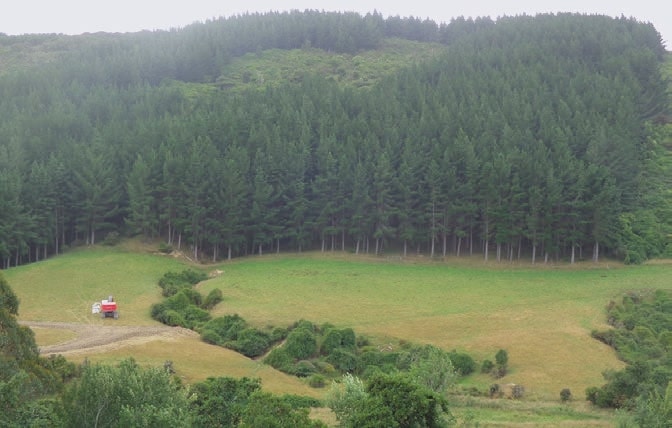
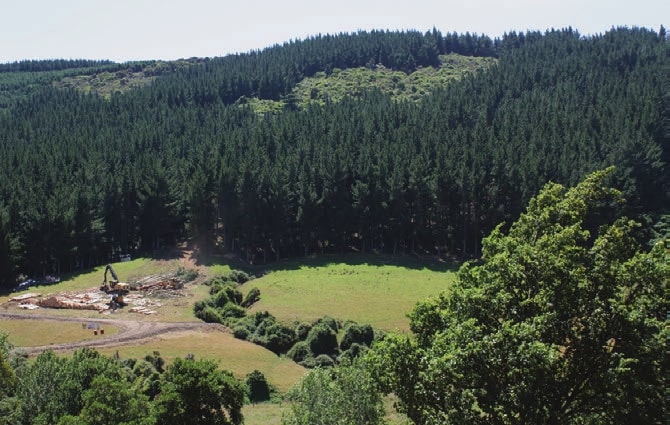
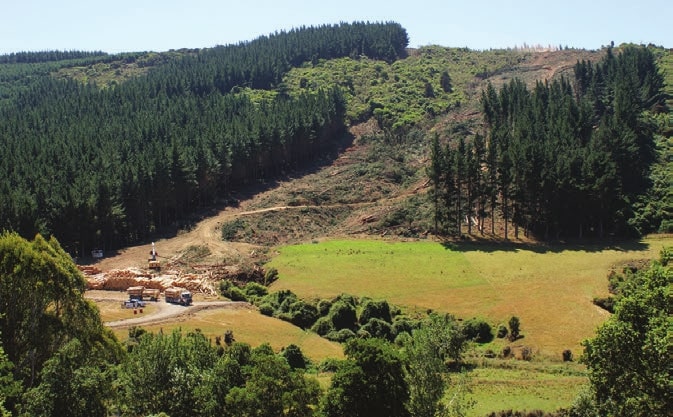
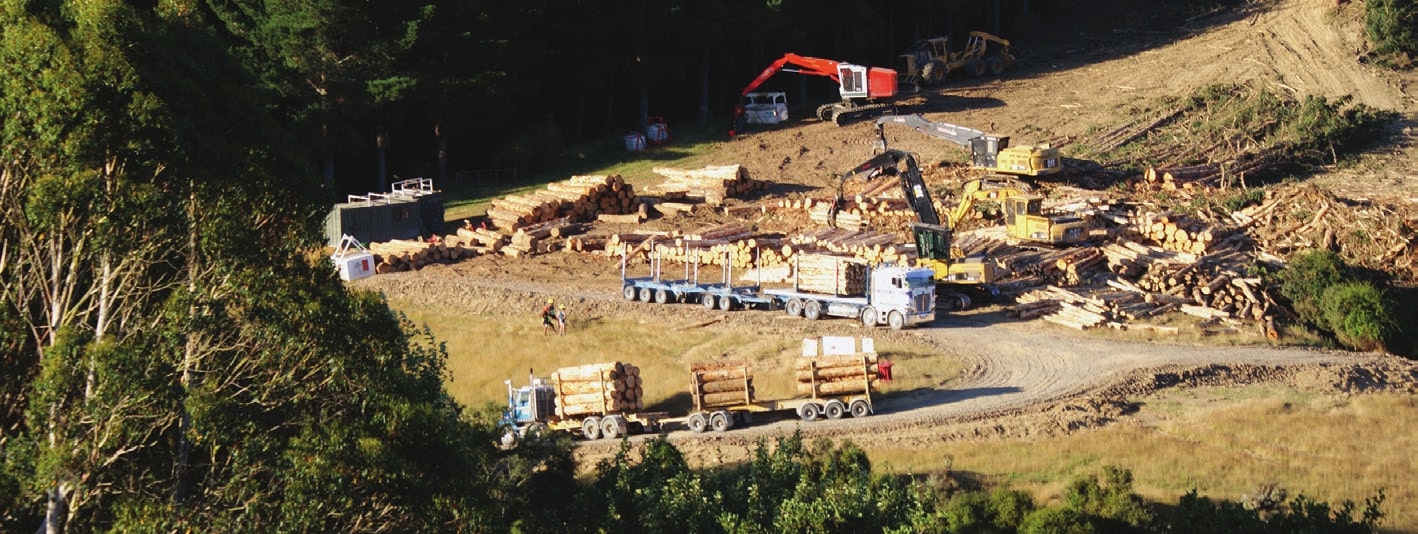
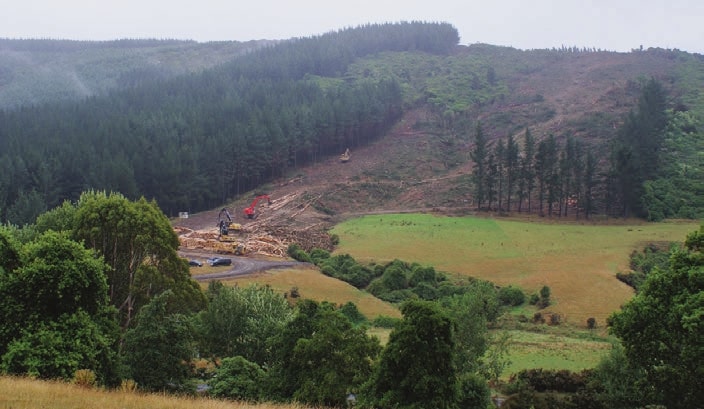
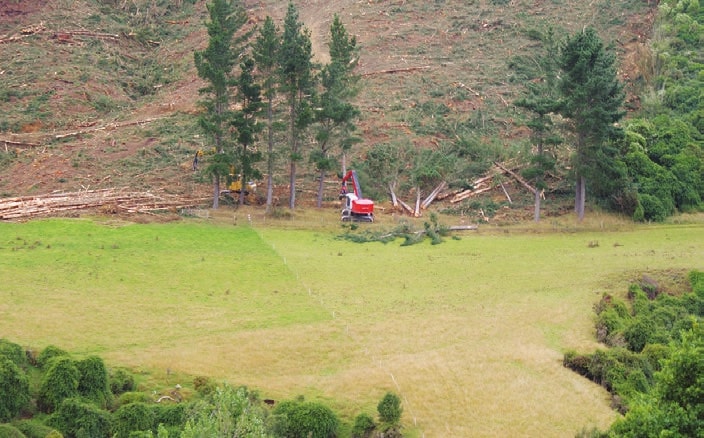
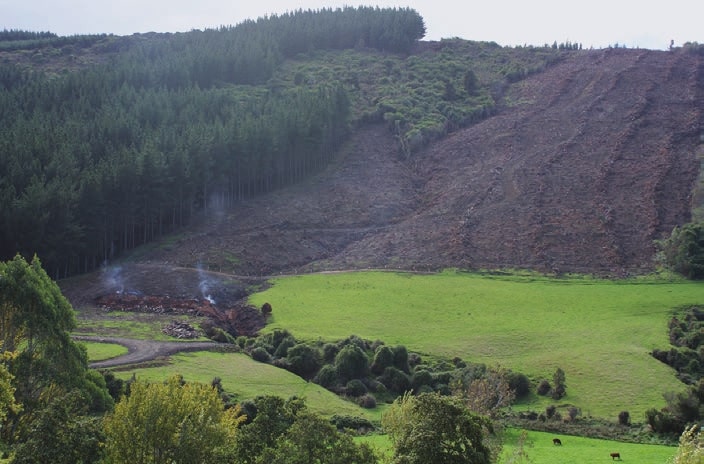
A ten day operation
As woodlot logging operations go, this one was relatively straight forward. Virtually all the trees were on a continuous 17 degree slope with only one small dry gully to contend with. The only complication was an adjoining QE II protected block of regenerating native forest. This was easily managed by the crew of Dennis Haye Logging who kept all trees from falling in that direction.
With a Madill self-levelling felling machine knocking the trees down and a six-wheeled skidder pulling as many logs as it could ft in its grapple down to the skid site, felling was complete within ten working days. Processing, sorting and loading the logs was handled by three more machines. Hand felling and delimbing was required for only a few outside trees and misshapen stems in the untended corner.
Dealing with the residues from logging operations is something that frustrates many farm foresters and this may only be improved when regional biofuel plants are established that can use waste and lower grades. With the current strong export demand for K grade logs we only needed to send three loads of billet wood to the MDF plant at Mataura but were still left with a large heap of bark, branches and offcuts. This we managed to mainly burn away to make the site available for the next harvest.
| Logs harvested | 3,977 tonnes |
| Area harvested | 6.5 hectares |
| Logs per hectare | 612 tonnes |
| Pruning | 24 per cent |
| Machinery transport costs | $6,875 |
| Logging cost | $30 per tonne |
| Cartage to mills average | $18.52 per tonne |
| Forest levy paid | $1,074 |
| Total nett income | $277,819 |
| Nett income per hectare | $42,741 |
| Nett income per tonne | $69.86 |
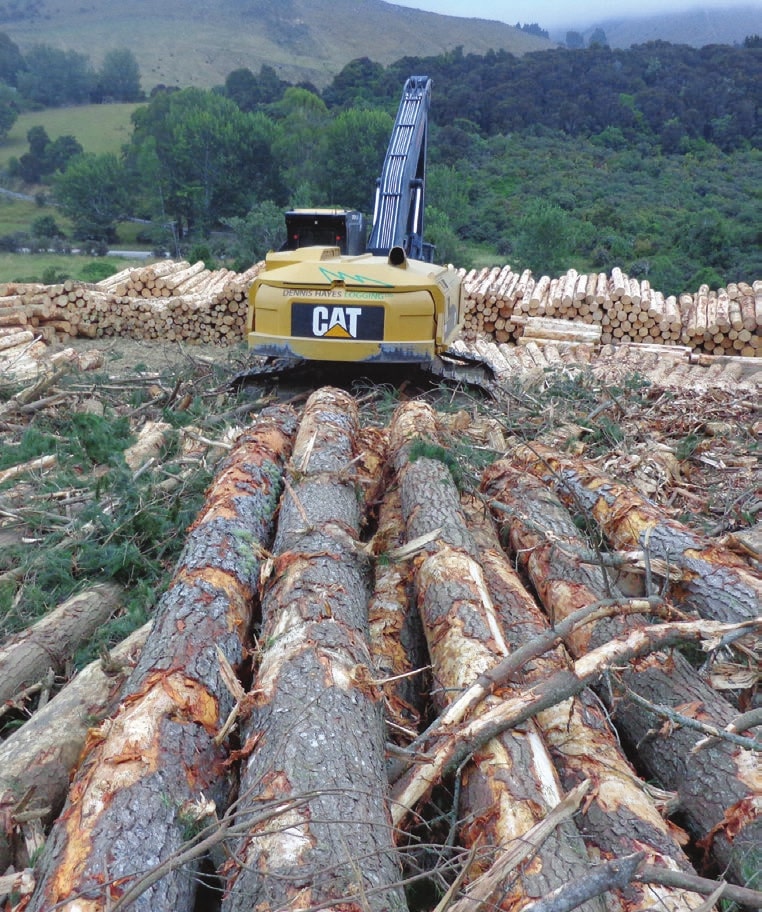
The final returns are very satisfying and much better than I would have anticipated when looking at the young trees in 1991. Radiata is a very forgiving species and the result here shows that, even with less than optimal management, the finances for farm forestry stack up as a land use. We are fortunate in that our generally reliable summer rainfall ensures good yields, albeit in a 20 per cent longer time frame than northern latitudes. This is offset by being 130 km from our nearest port so there are many areas around the country that will return better nett profits than these with the current buoyant prices.

 Farm Forestry New Zealand
Farm Forestry New Zealand